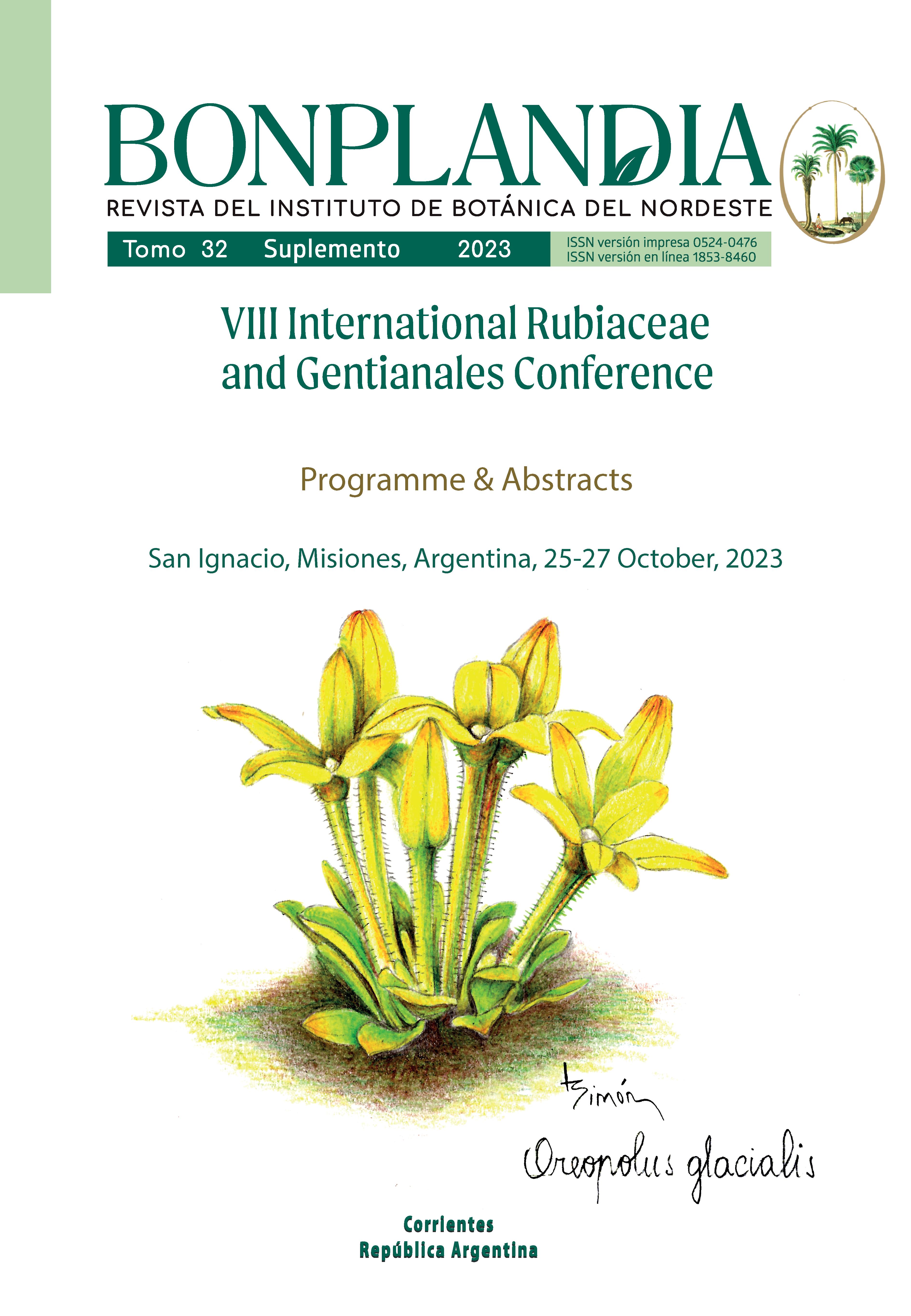Pollen morphology in the tribe Sipaneeae (Rubiaceae, Ixoroideae)
Resumo
The tribe Sipaneeae has its center of diversity on the Guiana Shield (northern South America), where 9 of the 10 genera occur, and a total of 44 species. It includes the genera Chalepophyllum (3 spp.), Dendrosipanea (3 spp.), Limnosipanea (3 spp.), Maguireothamnus (3 spp.), Neblinathamnus (2 spp.), Neobertiera (5 spp.), Pteridocalyx (1 sp.), Sipanea (17 spp.), Sipaneopsis (8 spp.), and Steyermarkia (1 sp.). The pollen morphology of all the genera of the tribe was studied. For pollen preparation, nearly mature flower buds (just before anthesis) were taken from herbarium material. Pollen grains destined for light microscope (LM) studies were mounted in Kaiser’s glycerine jelly. Pollen grains for scanning electron microscope (SEM) studies were suspended in ethanol and mounted on aluminium stubs using carbon adhesive tape and coated with a platinum palladium. Values of the length of polar and equatorial axes were based on LM-measurements. In all the genera, pollen grains are released in monads, and are 3- or 4-colporate. In most genera the number of colpi are consistently 3 or 4, which represents a significant diagnostic character. The largest pollen grains are found in Maguireothamnus, which is also the genus with the largest corollas in the tribe. The second largest grains in the tribe are found in Chalepophyllum, which is the genus with the second largest corollas in the tribe. The smallest pollen grains are found in Neobertiera, Pteridocalyx, and Sipanea, which are the genera with the smallest corollas in the tribe. The exine is externally foveolate-reticulate in Chalepophyllum, Neblinathamnus, Pteridocalyx, and Sipanea, foveolate or foveolate-reticulate in Dendrosipanea, shallowly foveolate, without perforations or finely perforated in Limnosipanea, smooth or finely foveolate in Maguireothamnus, and foveolate in Neobertiera, Sipaneopsis, and Steyermarkia. Possible pollen dimorphism was observed only in populations of S. pratensis var. pratensis, in which pollen grains dimensions and external ornamentation were found to be similar.Downloads
Não há dados estatísticos.
Downloads
Publicado
2023-10-26
Como Citar
Delprete, P. G., Van der Beeten, I., & De Block, P. (2023). Pollen morphology in the tribe Sipaneeae (Rubiaceae, Ixoroideae). Bonplandia, 32, 7. Recuperado de https://revistas.unne.edu.ar/index.php/bon/article/view/6944
Edição
Seção
Presentaciones
Licença
Copyright (c) 2023 Bonplandia

Este trabalho está licenciado sob uma licença Creative Commons Attribution 4.0 International License.
Declaration of Adhesion to Open Access
- All contents of Bonplandia journal are available online, open to all and for free, before they are printed.
Copyright Notice
- Bonplandia magazine allows authors to retain their copyright without restrictions.
- The journal is under a Creative Commons Attribution 4.0 International license.











.jpg)


